Fsd drives into japan: Tesla's Global Autonomous Driving "Exam," Who Can Finish First?
At the beginning of the year, FSD suddenly arrived in the country without any warning, sparking a wave of comparison frenzy. The complex road conditions in the country indeed posed a significant challenge for Tesla.
After completing the high-level game, Tesla chose Japan as the next destination for FSD. According to the test video released by the official source:
This right-hand drive Tesla completed in a heavy traffic urban area.
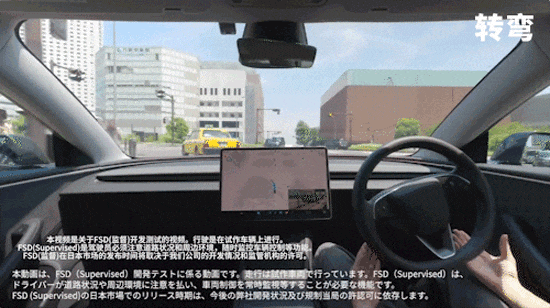
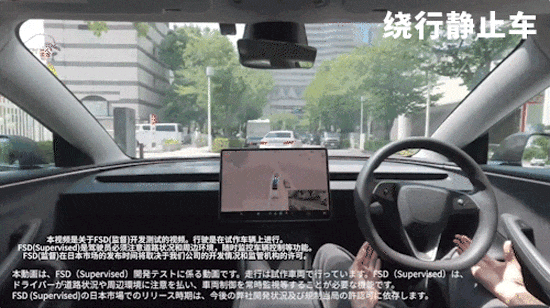
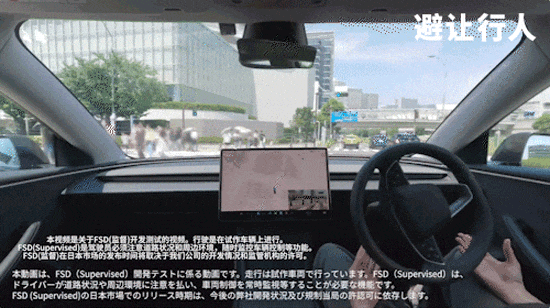
The actions were finally completed smoothly, reaching the destination with fluid motion, and the safety officer did not intervene throughout the process.
Tesla stated that once testing meets Japanese legal and regulatory requirements, the company will make the FSD feature available to users as soon as possible. Both new purchases and existing models can receive the assisted driving services through OTA updates.
Doesn't this sound familiar?
Yes, before this year, domestic owners who spent 64,000 on a car could almost hear similar "guarantees" from Tesla every year.
However, in Japan, where the issues of aging and "driver shortage" are becoming increasingly serious, the urgency for "reducing driving pressure" and even "not needing a driver's license" with FSD in the future is evidently much higher.
Therefore, it is not difficult to understand why the Japanese government, in the 2022 Road Traffic Act, established a licensing and data recording system for advanced autonomous driving, and set a goal for unmanned buses/taxis to operate nationwide 24/7 starting from 2026.
Compared to Japanese companies that haven't even passed the "beginner's level of assisted driving," FSD clearly has an unparalleled advantage in Japan.
For Tesla, this is yet another big step in rapidly expanding its global footprint.
Simultaneously, Musk also revealed that the implementation of FSD in Thailand is underway, and they are currently awaiting approval from local regulatory authorities.
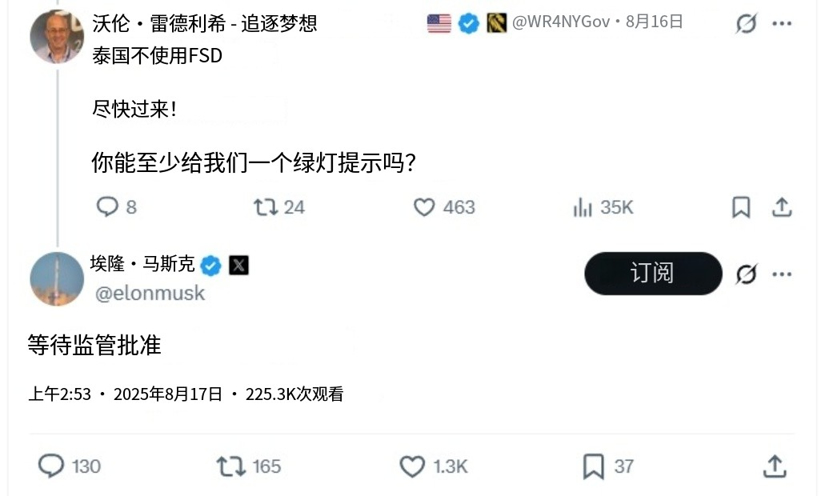
Of course, Tesla's FSD is currently primarily focused on the European and American regions.
According to public information, Tesla FSD has now entered dozens of countries in North America and Europe. From the test footage, FSD has demonstrated a high level of adaptability.
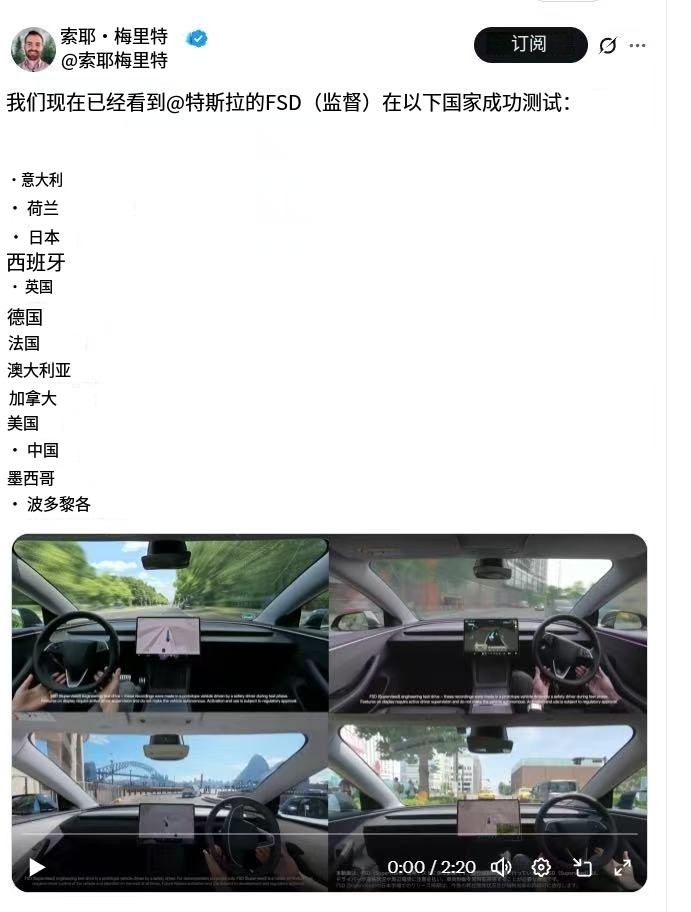
In Italian urban areas with many curves and intersections, the Tesla FSD handles the steering wheel with effortless poise.
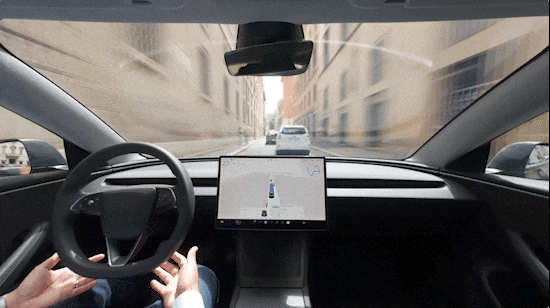
Tesla FSD's test in Italy actually resembles some situations in China, with heavy traffic and many pedestrians and two-wheelers on the road.
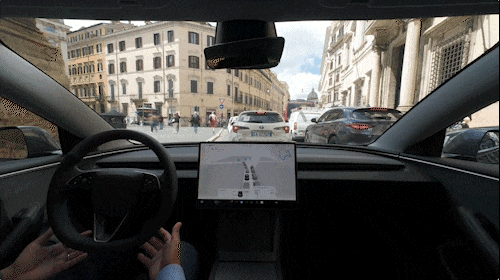
However, the domestic traffic environment usually adds several levels of difficulty to FSD.
In our recent tests, Tesla FSD consistently demonstrated a smooth performance, but it mainly struggles with three issues.
The first issue is that the congestion level of some streets in the country is too high, causing vehicles to stall and stop working when they are too close to obstacles such as people and two-wheelers.
The second issue is failing to recognize non-motorized vehicle lanes, often resulting in the risk of mistakenly entering them.
The third point is that Tesla FSD sometimes gets lost, such as in situations like underground tunnels or on and off elevated bridges.
In China's complex road conditions, some domestic driver assistance systems are like students taking the highly competitive college entrance exam in Jiangsu; they have been thoroughly tested and have developed some impressive skills, achieving partial leadership, making it so that Tesla's FSD might not necessarily have the upper hand.
As Tesla's FSD becomes "globalized," each country will bring it hundreds of thousands or even millions of kilometers of data, and perhaps this gap will gradually narrow.
Through the "shadow mode," Tesla transmits a vast amount of data on local real-world traffic conditions, driving habits, and regulatory differences back to the cloud, enabling Tesla's intelligent driving models to become more "experienced." This allows them to handle a wider variety of extreme scenarios and improve functionality.
Tesla's unified pure vision hardware solution allows the FSD function, once recognized, to rapidly penetrate the market with a simplified manufacturing process and low costs spread over a fleet of millions.
The more crucial point is that whoever succeeds first will have the right to speak.
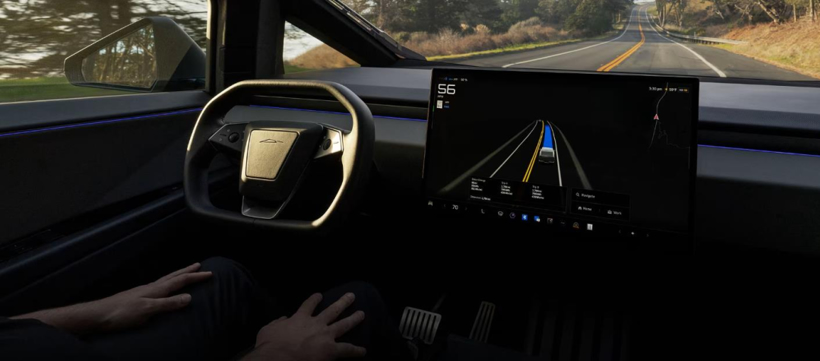
The intelligent driving industry currently has significant gaps in laws and regulations as well as practical applications. The implementation of an intelligent driving technology relies on the establishment of local laws and regulations, insurance clauses, data protection, and safety standards.
If Tesla becomes a participant or maker of the system, newcomers not only have little chance of gaining a share but can only become executors.
This is not only a competition at the passenger car stage, but Tesla's Robotaxi also uses the same hardware as the mass-produced car. Once technology and policies are mature, the fruits of the passenger car stage can be directly used to "serve" Tesla's Robotaxi, forming a closed loop of "car, software, and mobility."
In "Tesla-friendly areas," domestic L4-level Robotaxis, which often have four or five LiDAR sensors, might not find much profit.
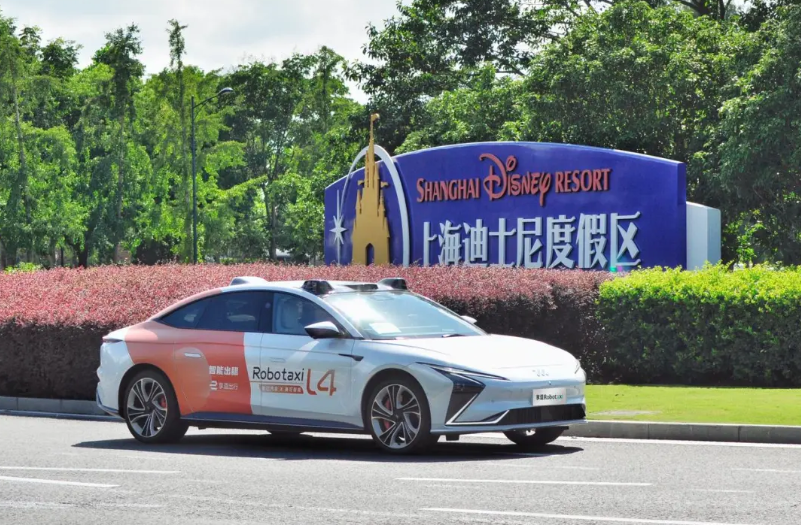 Imotor L4 Level Robotaxi Resort Area Line
Imotor L4 Level Robotaxi Resort Area Line
Of course, this is just one perspective, and the reality is not as pessimistic, because the opportunities of globalization are not only recognized by Tesla.
From a technical standpoint, large models have become a consensus, and domestic manufacturers have entered the stage of using data to train AI for intelligent driving.
Although domestic manufacturers' cloud model computing power is not as high as Tesla's, the complex scenarios and high-quality data in China have given rise to richer and more extreme parking and navigation functions, such as mechanical parking spots and narrow road extrication.
From the pace of globalization, both passenger car brands and mobility service brands have been established to varying degrees overseas.
Momenta is involved in both providing intelligent driving solutions for joint venture passenger cars like Toyota, Honda, Volkswagen, and BBA, and launching new cars with new technologies overseas alongside the IM brand. Additionally, it is collaborating with the Uber platform to roll out Robotaxi services.
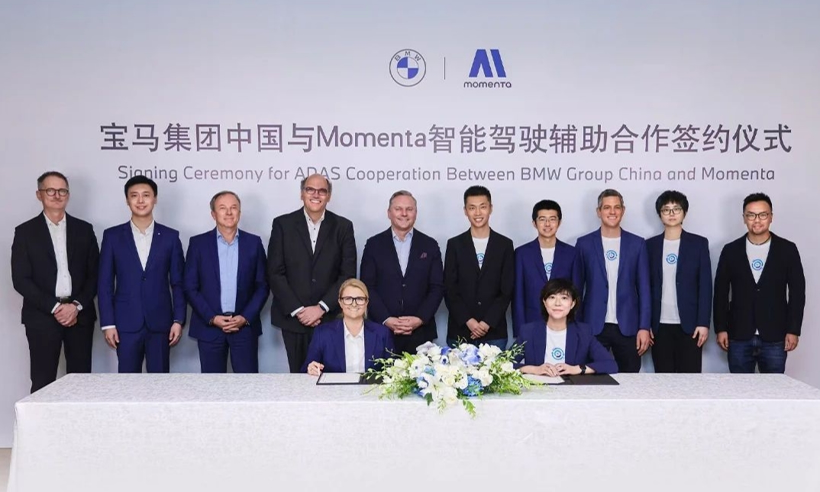
The assisted driving solutions developed by Momenta and IM Motors have been installed in IM Motors' global strategic models, the IM5 and IM6. These two models will be sold to the UK and Australia. Due to the system's ability to quickly adapt to road environments around the world, it can adapt to road conditions and traffic styles after learning.
Certainly, car owners around the world who are enthusiastic about assisted driving would appreciate having more options. After all, the subscription fee for Tesla's FSD isn't cheap. For instance, in the United States, even after the price reduction, using FSD still costs $99 per month or a one-time payment of $8,000 to buy it outright.
The scope of competition in intelligent driving is beginning to extend globally.
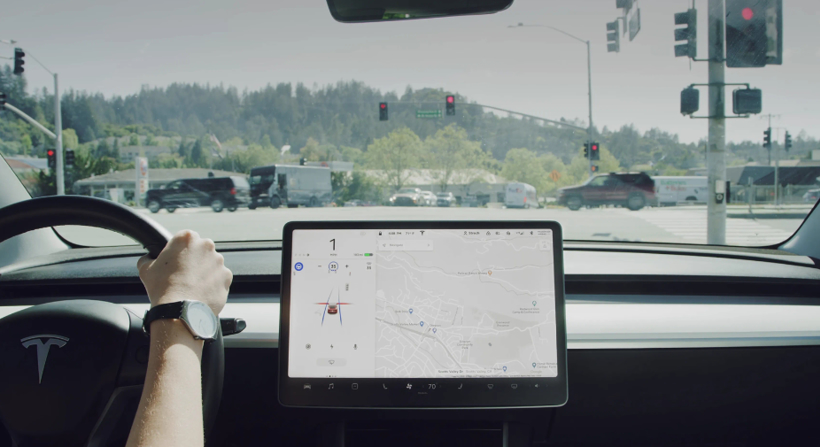
In the competition among domestic driver assistance systems and with Tesla, the cost of intelligent driving is being reduced, computing power is rapidly increasing, regulations are being established more quickly, yet there are fewer and fewer players in the game.
In addition to holding their ground in the domestic market, domestic manufacturers need to avoid the predicament faced by past joint venture vehicles. They must first achieve "globalization" in the field of smart driving to truly compete with Tesla in the final showdown.
【Copyright and Disclaimer】The above information is collected and organized by PlastMatch. The copyright belongs to the original author. This article is reprinted for the purpose of providing more information, and it does not imply that PlastMatch endorses the views expressed in the article or guarantees its accuracy. If there are any errors in the source attribution or if your legitimate rights have been infringed, please contact us, and we will promptly correct or remove the content. If other media, websites, or individuals use the aforementioned content, they must clearly indicate the original source and origin of the work and assume legal responsibility on their own.
Most Popular
-

EVA Morning Prices on September 12: Most of the Market Holds Steady, Highest Rise of 50 Yuan
-

Vynova's UK Chlor-Alkali Business Enters Bankruptcy Administration!
-

[PET Weekly Outlook] Polyester Bottle Chips Expected to Oscillate and Warm Up with Costs Today
-

Nissan Cuts Production of New Leaf EV in Half Due to Battery Shortage
-

Case Study | Clariant AddWorks™ Additives Solve Plastic Yellowing Problem






